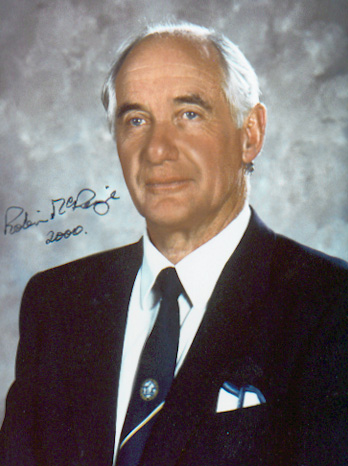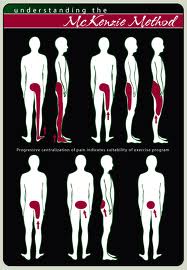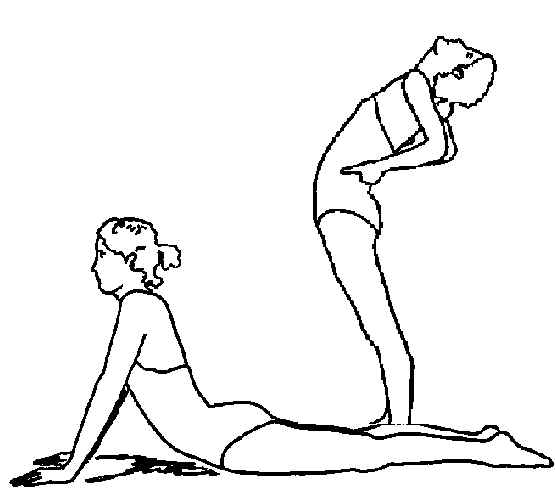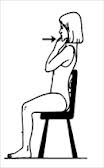As the facility provider
Accredited From The McKenzie Institute International, New Zealand
A Non-surgical superspecialisation center for Back, Neck and Joint pain.
At a certified McKenzie clinic, you do not need to come to us for repeated sessions to strength training to prevent recurrences as there is no evidence in research that strength training can prevent recurrence of back pain with or without sciatica or neck pain with or without brachialgia.

Robin Anthony McKenzie changed the way patients worldwide treat back and extremity issues. The McKenzie Method of Mechanical Diagnostics and Therapy, developed by Robin in the 1950s, has become a standard in the field.
Robin devoted his professional life to
the study of musculoskeletal disorders and their treatment. His
theories are now supported with scientific evidence.
Read More.
The McKenzie Method is a low technology, structured assessment process using the clinical reasoning skills of the clinician, rather than Hitech machines to diagnose your problems. The McKenzie Method easily identifies responders and non-responders in all populations. In cases when a patient does not respond mechanically, alternative means of treatment or referral for further medical evaluation is warranted. Also known as Mechanical Diagnosis and Therapy, the McKenzie Method® is a comprehensive approach to the spine and joints with a philosophy of active patient involvement and education for back, neck and extremity problems which will empower the patient to selfmanage recurrences. This approach continues to be the most researched physical therapy based method available. The key distinction is its initial assessment component—a safe and reliable means to accurately reach a diagnosis and only then make the appropriate treatment plan. Rarely are expensive tests required, Certified MDT clinicians are trained to assess and diagnose, manage or refer all areas of the musculoskeletal system which includes the joints, ligaments, tendons, muscles, bones which include the spine – back and leg, neck and arms, forearms, hands , trunk, and all joints of the body.
Unique to the McKenzie Method, the process begins with a thorough history and testing of movements to identify distinct patterns of pain responses that are: reproducible, objective, and reliable and reflect characteristics of the underlying pain generator.

The most common and meaningful pattern of pain response is Centralization, which is well documented now in literature as both a diagnostic tool and a prognostic indicator. This is defined as a patient’s referred or radiating pain (whether just slightly off centre, into the buttock, or all the way to the toes) promptly reversing, returning to the centre of the back, and then usually also abolishing. Centralization is clinically induced with clinically administered postures, positions and repeated movements.
Whether the patient’s pain is acute or chronic, if Centralization occurs through this logical step by step assessment process, good outcomes are favorable in acute to chronic patients. Centralization is independent of non-organic and positive behavioral signs seen in chronic pain. It provides a benefit to the patient and clinician by eliminating the need for expensive &/or invasive procedures. Research has evidenced that non-centralization is an early indicator of a surgical outcome.
Ultimately, it provides a rational guide to the most optimal treatment strategy for a specific patient. A series of individualized exercises subsequent to the patient’s symptomatic and mechanical responses during the assessment are prescribed and, most importantly, based on the Directional Preference that will centralize or abolish pain, i.e. extension or flexion, right or left lateral movement, etc.
Clinical researchers have largely
agreed upon the value of exercise in musculoskeletal problems.
Ongoing research has also discovered that to be effective, exercise
needs to be individualized to both the particular patient and their
condition. When this is done, movement becomes a very powerful tool
in the rehabilitation of musculoskeletal problems.
*** In the sense, you have
to be assessed for the exercises
which would benefit your
condition. Exercises cannot be
just
ticked marked
from a list of general exercises.
Well-trained McKenzie practitioners will be able to identify those who would rapidly respond and can self manage faster versus more difficult cases where advanced McKenzie techniques might benefit the patient versus those patients whose diagnosis is non-mechanical in nature, and these patients are then quickly referred to the appropriate medical consultant for alternate care, thus avoiding unnecessary periods of inappropriate or expensive management at our end.
Most patients who do respond favorably to MDT can successfully treat themselves - and minimize the number of visits to the clinic – when provided the necessary knowledge and tools putting him or her in control of their treatment safely and effectively.
Patients who stick to the
prescribed treatment protocols are less likely to have persistent
problems.
Thus, by learning how to self-treat the current problem, patients gain hands-on knowledge on how to minimize the risk of recurrence and how to quickly manage themselves if symptoms do occur.
Read the Treat Your Own Back, and
the other Treat Your Series
these books could change your
life.
McKenzie Clinicians.
Unfortunately, many clinicians claim to “do McKenzie” when in fact they are only using a few of the techniques along with other treatments. The research shows that unless the clinician has been certified Cert. MDT(ie taken all the courses followed by the exam), and / or completed the Diploma (Dip. MDT) and assess the patient through the McKenzie system, they often are not able to get the results that a fully trained MDT therapist can.

Treatment.
McKenzie treatment uniquely emphasizes education and active patient involvement in the management of their treatment in order to decrease pain quickly, and restore function and independence, minimizing the number of visits to the clinic thus providing cost and time effective management. If a problem is more complex, self-treatment may not be possible right away. However, a certified McKenzie clinician will know when to provide additional advanced hands-on techniques until the patient can successfully manage the prescribed skills on their own.
Ultimately, most patients can successfully treat themselves when provided the necessary knowledge and tools. An individualized self-treatment program tailored to the lifestyle of the patient puts the patient in control safely and effectively and maintain their success outside the facility.
Preventive.
Patients gain an experiential education learning to self-treat the present problem. The management of these skills and behaviors will minimize the risk of recurrence and allow patients to rapidly manage themselves when symptoms occur. Research has proved time and again that non-specific low back and neck pain referred to limbs has a recurrent nature.

The McKenzie Institute International runs a programme of
certification through formal examination which determines levels of
competency in practitioners of the McKenzie system of treatment for
mechanical disorders of the back and neck. The list of therapists
includes those who have demonstrated clinical competency by taking
and passing the Institute's Credentialling Examination Cert. MDT.
The Institute also awards its own Diploma to successful candidates
in recognition of the attainment of the highest level of
achievement in the Institute's International Programme of Education
in Mechanical Diagnosis and Therapy. Practitioners with this
qualification are indicated by the letters “Dip
MDT”.
What is a Certified McKenzie Clinic.Is there a difference between :Credentialled McKenzie Therapist and "Certified McKenzie Clinic". Click here.
Achievable goals of McKenzie’s MDT are to:
Reduce and abolish pain and deformity
Maintain the reduction with education and posture advice
Resume all functional activities to previous levels; and
Prevent recurrences through patient empowerment, self management, and posture care.
Copyright
©2013, Shrigiridhari Physiotherapy Center. All Rights
Reserved.